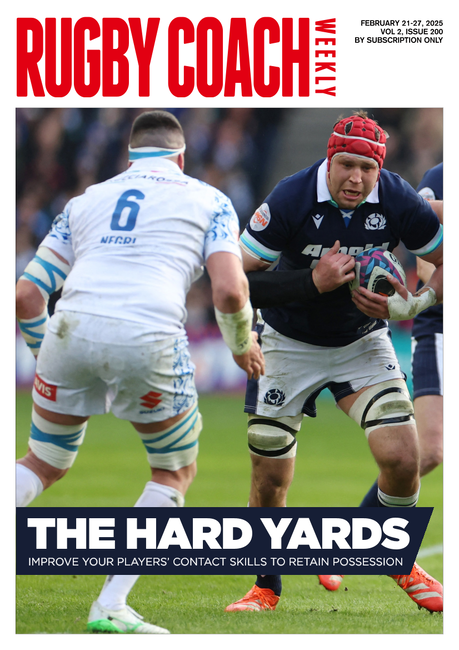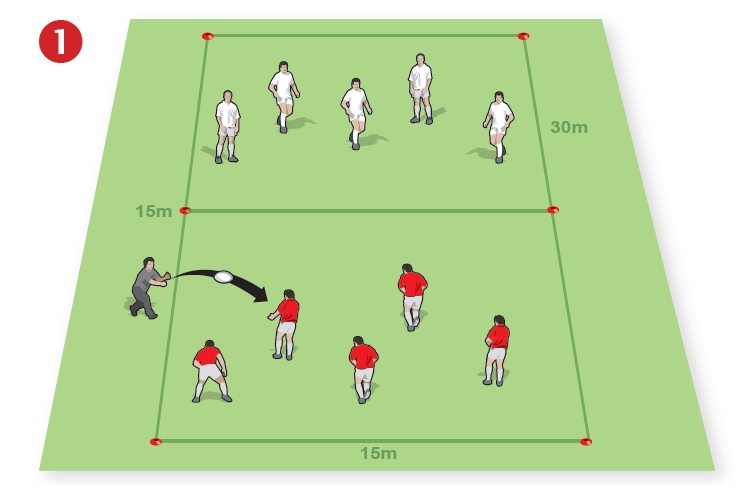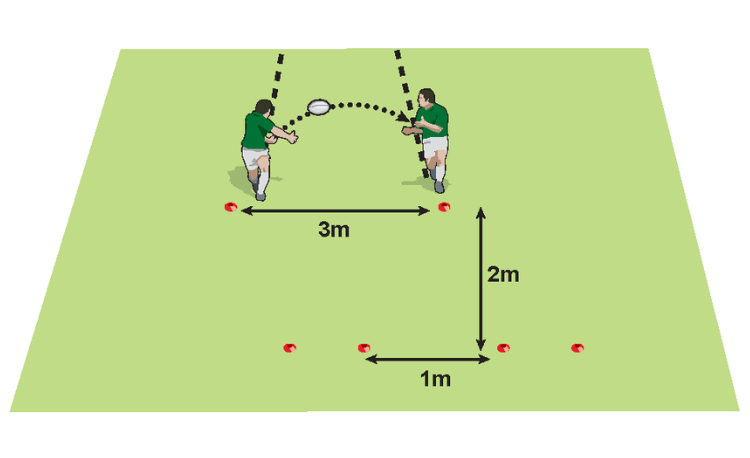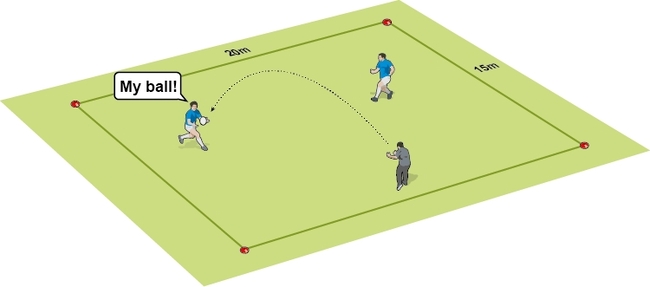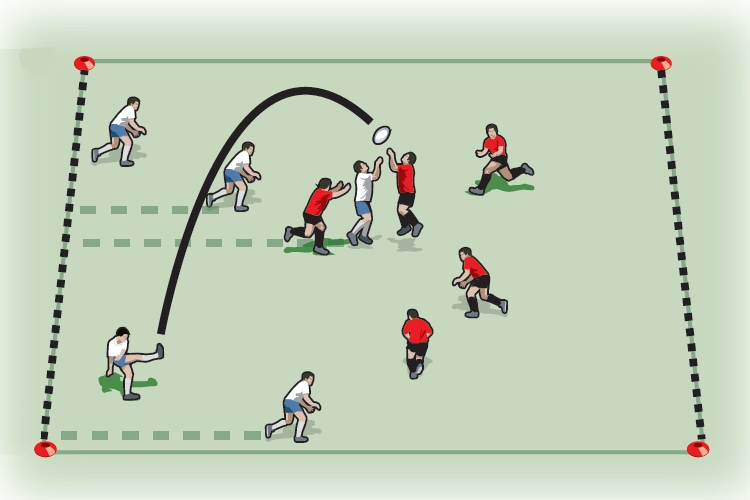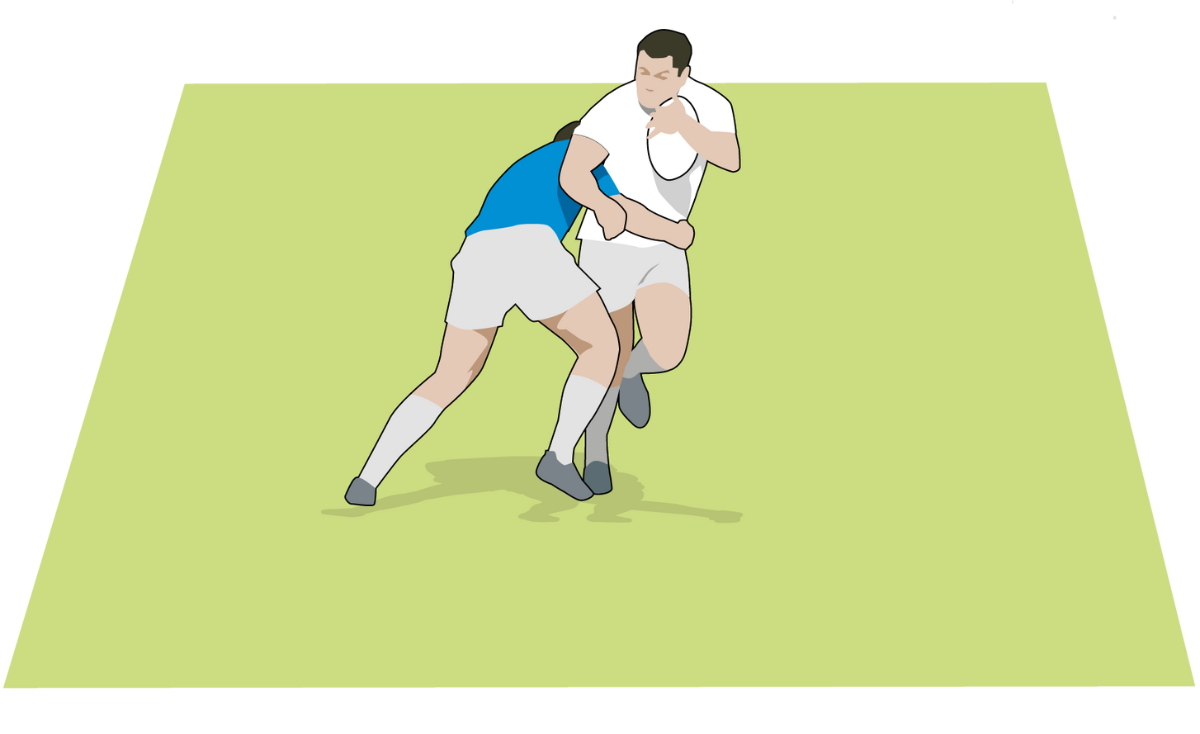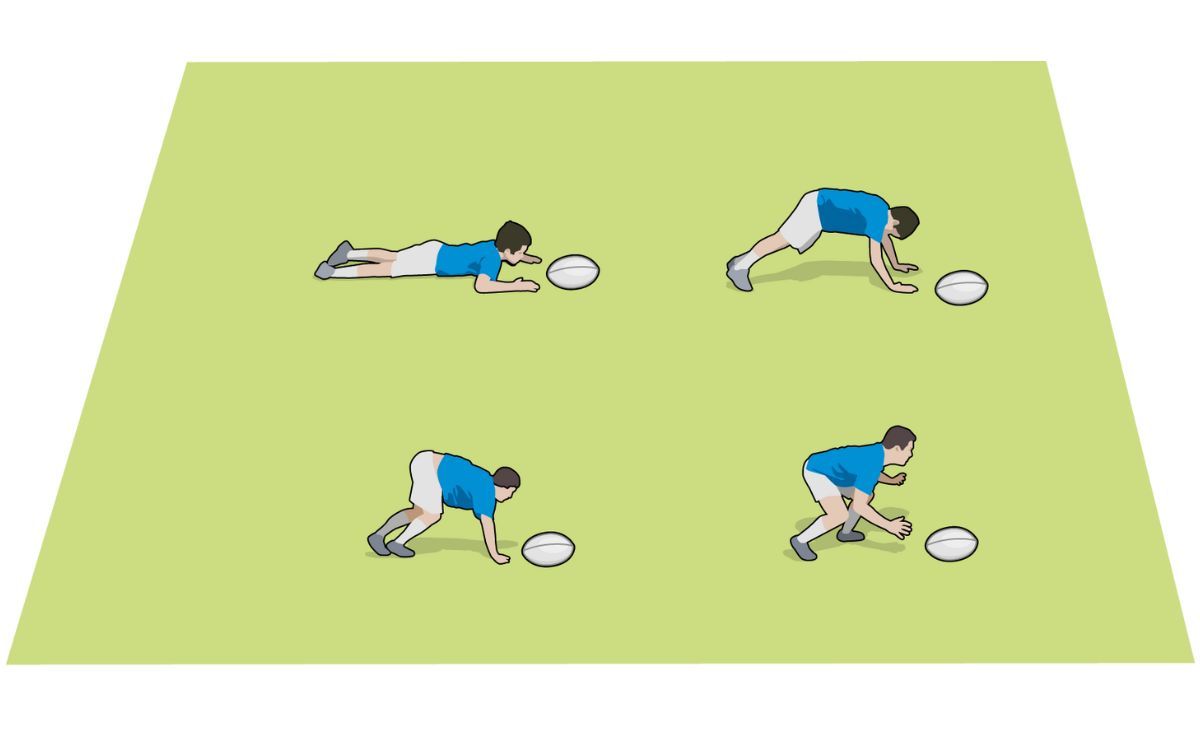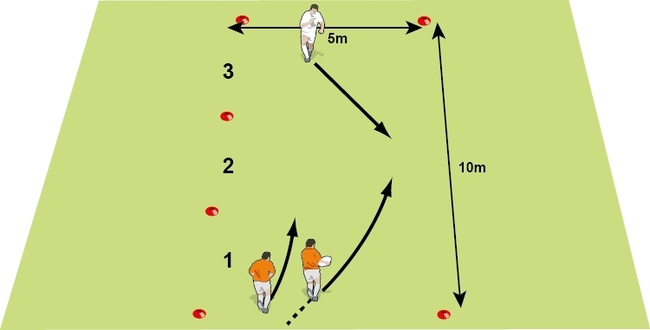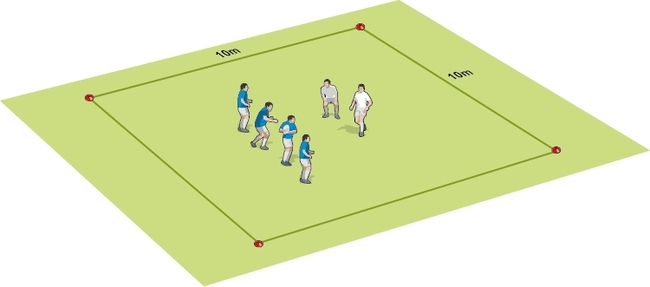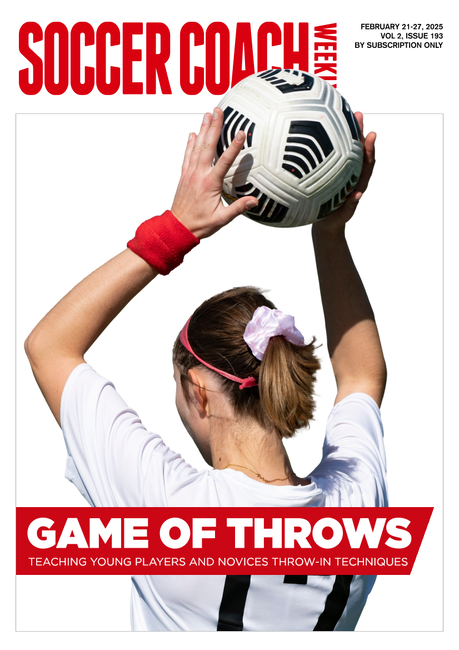Kick and keep possession
Don't believe the hype. A kick out of hand does not mean your team will always lose possession of the ball.
Here are three good reasons why.
1. Kicks that give you a chance to regain possession
Chip and chase: To use against a flat defence as it rushes up.
Angle the kick towards the chaser, so that the chaser can meet the ball coming from the side rather than from over their body.
Training tips: Players should drop the ball onto the foot and kick it on its point. If the kicker is not chasing, they can lean back a little during the kicking action.
Get your players to practise by kicking over the crossbar of a set of rugby posts. Encourage them to aim to get the ball to land before the end of the dead ball area.
Grubber: To use close to their try line and where the defence is lying flat.
Chasers need to be able to pick up a ball on the run before the try line and/or kick a low ball soccer-style.
Rugby training tips: Players should kick in the middle of the ball, so that it doesn't bounce up for a defender to catch and launch an easy counter attack.
Have your players practise by kicking through "traffic", with lots of players rushing around and towards them. You can start of with static players or bags and pads.
Wingers should practise the chase, pick up and kick on regularly. I suggest that every two months is the minimum.
Up and under rugby move (also know as the "bomb" or "Garryowen"): To use against a team with a weak back three (11, 14 and 15). Wingers can be especially vulnerable to this tactic.
Use a pre-arranged call, so your chasers can maximise their opportunities to compete for the ball. They will have to jump early to compete for the ball in the air.
Key rugby training tips: Players should kick the ball in the middle, not the point, with the ball at just below hip height.
2. Kicks for lineouts
Kicking the ball into the tramlines (between the 15m line and the touchline) and behind the opposition's 22m line often means that defenders will clear the ball into touch, giving you the lineout.
3. Kicks to the dead ball area
This is the riskier option, but if you're already in the opposition's 22m area, you may want to roll the ball into their dead ball area. Why? Because if performed correctly, there will be three likely outcomes:
- A 22 metre drop-out for the opposition. You're likely to regain possession, though downfield.
- A 5 metre scrum to you if the ball touches an opposition player on the way to the line. You regain possession in a strong attacking area.
- A try for you.
Kicking hot spots

- A kick into "X": A kick into the tramlines usually forces their receiver to kick for touch.
- A kick into "Y" (the "graveyard"): This is a difficult zone to pass and kick out from.
- A kick into "Z" (the "graveyard"): A high ball into this zone tests their 15 (the full back). If their 15 marks the catch, he's more likely to kick back to you.
This article is from my Rugby Coach publication, specially designed to help you become a more confident, successful rugby coach in just 30 minutes a month.
Click here to read more, learn about the great offers available when you sign up and to become a subscriber today.
Newsletter Sign Up
Coaches Testimonials

Gerald Kearney, Downtown Las Vegas Soccer Club

Paul Butler, Florida, USA

Rick Shields, Springboro, USA

Tony Green, Pierrefonds Titans, Quebec, Canada
Subscribe Today
Be a more effective, more successful rugby coach
In a recent survey 89% of subscribers said Rugby Coach Weekly makes them more confident, 91% said Rugby Coach Weekly makes them a more effective coach and 93% said Rugby Coach Weekly makes them more inspired.
Get Weekly Inspiration
All the latest techniques and approaches
Rugby Coach Weekly offers proven and easy to use rugby drills, coaching sessions, practice plans, small-sided games, warm-ups, training tips and advice.
We've been at the cutting edge of rugby coaching since we launched in 2005, creating resources for the grassroots youth coach, following best practice from around the world and insights from the professional game.


